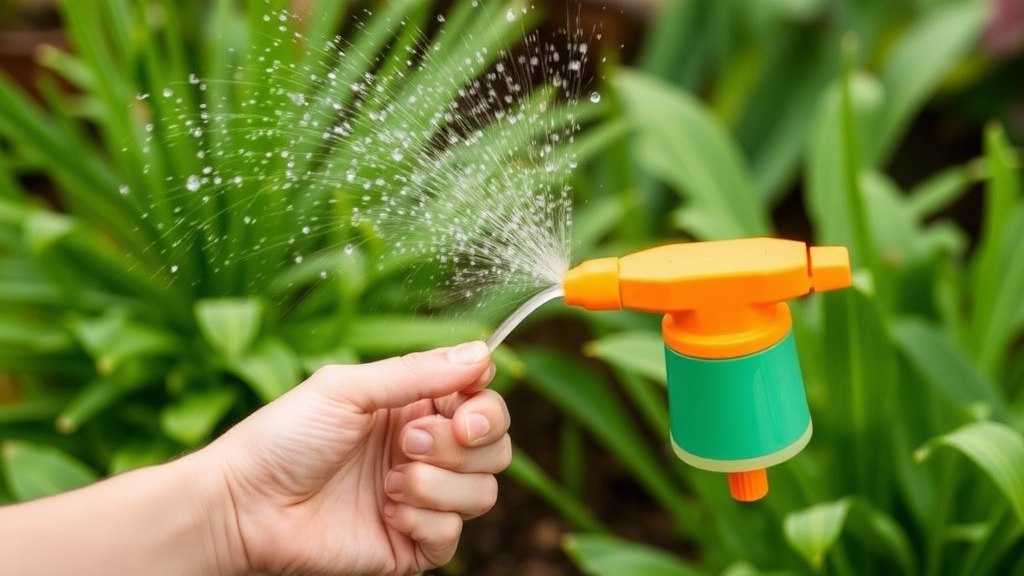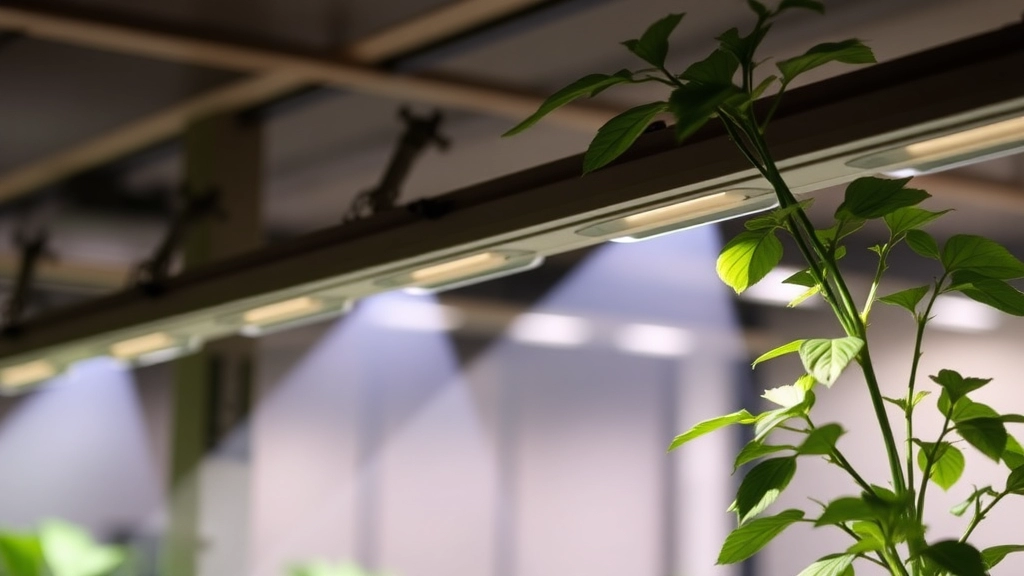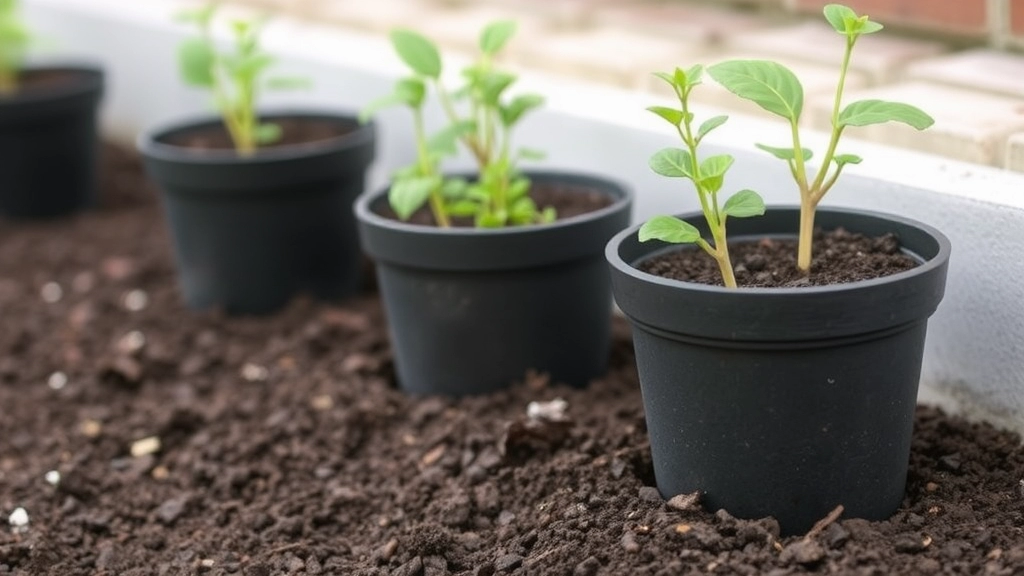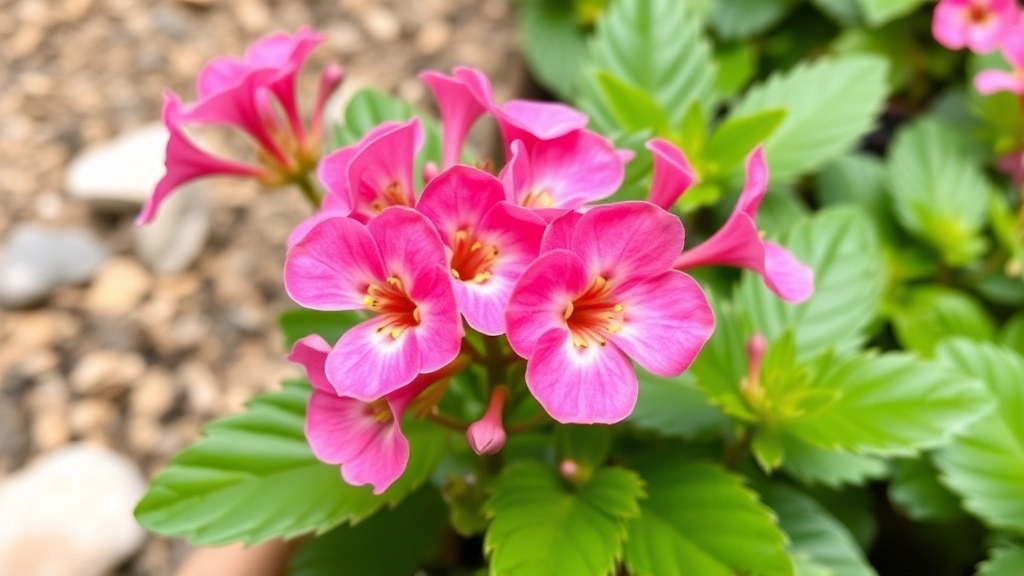Kalanchoe Pink Butterflies: A Guide to Growing and Caring
When it comes to adding a splash of colour to your succulent collection, Kalanchoe Pink Butterflies is a top choice. This eye-catching plant, known for its vibrant pink plantlets that resemble butterflies, is a favourite among gardening enthusiasts. In this guide, I’ll walk you through everything you need to know about growing, caring for, and propagating Kalanchoe Pink Butterflies.
Ideal Growing Conditions
First, let’s talk about the ideal growing conditions for this stunning succulent. Kalanchoe Pink Butterflies thrive in well-draining soil and require plenty of sunlight to maintain their vivid colours. Overwatering is a common mistake, so it’s crucial to let the soil dry out between waterings.
What You’ll Learn
- How to manage light exposure
- How to prevent pests
- How to choose the right pot for optimal drainage
Ready to dive in? Let’s get started!
Are you struggling to create the perfect environment for your Kalanchoe Pink Butterflies?
These vibrant succulents thrive best when their growing conditions are just right.
## Temperature and Humidity
– **Temperature:** Kalanchoe Pink Butterflies prefer temperatures between 18°C to 24°C.
– **Humidity:** They thrive in low to moderate humidity levels.
## Light Requirements
– **Bright Indirect Light:** These plants flourish in bright, indirect sunlight.
– **Avoid Direct Sun:** Too much direct sunlight can scorch their leaves.
## Location
– **Indoor vs. Outdoor:** If you’re keeping them indoors, a south or west-facing window is ideal.
– **Outdoor Placement:** For outdoor settings, ensure they are sheltered from harsh afternoon sun.
## Air Circulation
– **Good Airflow:** Ensure your plant has adequate airflow to prevent fungal issues.
For more detailed care instructions, you might find our [guide on how to care for pink butterflies kalanchoe succulent](https://planthq.org/how-to-care-for-pink-butterflies-kalanchoe-succulent/) helpful. Additionally, if you’re interested in other kalanchoe varieties, check out our [kalanchoe succulent identification guide](https://planthq.org/kalanchoe-succulent-identification-guide-top-varieties-traits/).
Watering Guidelines and Common Mistakes to Avoid

So, you’ve got your Kalanchoe Pink Butterflies, and now the question is: how much water do they actually need?
Let’s dive into the watering game because it’s a common area where many plant parents trip up.
Watering Tips
- Check the Soil: Stick your finger about an inch into the soil. If it feels dry, it’s time to water. If it’s still moist, hold off.
- Watering Frequency: Generally, you’ll want to water every 2-3 weeks. But remember, this can change with the seasons. In the warmer months, they might need a bit more love.
- Watering Technique: Water thoroughly until it drains out of the bottom. This ensures the roots get a good drink.
- Use Room Temperature Water: Cold water can shock the plant.
Common Mistakes to Avoid
- Overwatering: This is the biggest culprit. Kalanchoe Pink Butterflies hate soggy roots. If you see yellowing leaves, it’s a sign you’re giving them too much water.
- Underwatering: On the flip side, don’t let them dry out completely. Crispy leaves are a telltale sign they’re thirsty.
- Ignoring Drainage: Make sure your pot has drainage holes. Standing water is a no-go.
- Watering Schedule: Don’t just water on a set schedule. Pay attention to your plant’s needs instead.
By keeping these tips in mind, you’ll give your Kalanchoe the hydration it craves without drowning it in water.
Propagation Techniques: Plantlets and Stem Cuttings
When it comes to expanding your Kalanchoe Pink Butterflies collection, propagation is a rewarding and straightforward process. Many enthusiasts often wonder about the best methods to achieve successful propagation.
Plantlets
Kalanchoe Pink Butterflies are known for producing small plantlets, or “pups,” that can be easily separated from the mother plant. Here’s how to do it:
- Identify Healthy Plantlets: Look for mature pups that are at least a few inches tall.
- Gently Remove: Using a clean, sharp knife, carefully cut the plantlet away from the mother plant, ensuring you take some roots with it.
- Allow to Callous: Let the cut end dry for a day or two to form a callous, which helps prevent rot.
- Potting: Place the plantlet in well-draining soil and water lightly.
Stem Cuttings
Stem cuttings are another effective way to propagate Kalanchoe Pink Butterflies. This method is particularly useful if your plant has elongated stems. Here’s a step-by-step guide:
- Select a Healthy Stem: Choose a stem that is healthy and free from pests.
- Cut the Stem: Use a clean blade to cut a 4-6 inch section of the stem.
- Remove Lower Leaves: Strip the lower leaves from the cutting, leaving a few at the top.
- Callous the Cutting: Allow the cut end to dry for a few hours or overnight.
- Planting: Insert the cutting into well-draining soil and water sparingly until roots develop.
Tips for Success
- Humidity: Keep the cuttings in a humid environment, either by covering them with a plastic bag or placing them in a propagation dome.
- Temperature: Ensure the environment is warm, ideally between 20-25°C (68-77°F).
- Patience: Roots may take a few weeks to develop, so be patient and monitor moisture levels.
For more detailed care tips, check out our Care Tips for Kalanchoe Pink Butterflies and learn how to keep your plants thriving. Additionally, you might find our guide on purchasing Kalanchoe Pink Butterflies useful if you’re looking to expand your collection.
Managing Light Exposure for Optimal Growth

Are you struggling to keep your Kalanchoe Pink Butterflies thriving? One of the most crucial factors in their health is light exposure.
Understanding Light Requirements
Kalanchoe Pink Butterflies flourish in bright, indirect sunlight. Here’s what you need to know:
- Ideal Light Conditions: Aim for around 6 hours of bright, indirect light daily.
- Direct Sunlight: While they can tolerate some direct sunlight, prolonged exposure can scorch their delicate leaves.
- Low Light: Too little light can lead to leggy growth and fewer blooms.
Signs of Improper Light Exposure
Keeping an eye on your plant’s behaviour can help you adjust its light conditions effectively. Here are some signs to watch for:
- Yellowing Leaves: Indicates too much direct sunlight.
- Leggy Growth: A sign of insufficient light.
- Stunted Growth: May suggest your plant isn’t getting enough energy.
Best Locations for Your Kalanchoe
Finding the right spot can make all the difference. Consider these locations:
- Near a Window: A south or west-facing window is ideal.
- Filtered Light: Use sheer curtains to diffuse harsh sunlight.
- Avoid Dark Corners: Keep your Kalanchoe away from dimly lit areas.
Adjusting Light Exposure
If you notice any of the signs mentioned earlier, it’s time to make some changes:
- Rotate Your Plant: This ensures even light distribution.
- Move Locations: Shift your Kalanchoe to a brighter spot if necessary.
- Seasonal Adjustments: Remember that light levels change with the seasons, so be prepared to adjust accordingly.
As we delve deeper into the care of Kalanchoe Pink Butterflies, it’s crucial to address the potential threats that can hinder their growth.
### Common Pests
Kalanchoe Pink Butterflies can attract a few unwelcome guests. Here are the most common pests to watch for:
– **Aphids**: Tiny, sap-sucking insects that can cause leaves to curl.
– **Mealybugs**: White, cottony pests that cluster in leaf joints.
– **Spider Mites**: Tiny arachnids that create fine webbing and cause leaf discoloration.
### Preventive Measures
To keep your Kalanchoe healthy, consider these preventive measures:
– **Regular Inspection**: Check your plants weekly for signs of pests.
– **Clean Leaves**: Wipe leaves with a damp cloth to remove dust and deter pests.
– **Neem Oil**: A natural pesticide that can be sprayed on affected areas.
### Common Diseases
In addition to pests, diseases can also pose a threat. Here are a few to be aware of:
– **Root Rot**: Caused by overwatering, leading to mushy roots.
– **Powdery Mildew**: A white fungal growth on leaves, often due to high humidity.
### Prevention Strategies
To prevent diseases, follow these guidelines:
– **Proper Watering**: Ensure the soil dries out between waterings.
– **Good Airflow**: Space plants adequately to avoid humidity buildup.
– **Sanitize Tools**: Clean your gardening tools to prevent disease spread.
For more detailed information on caring for Kalanchoe Pink Butterflies, check out this [step-by-step guide on propagation](https://planthq.org/how-to-propagate-kalanchoe-pink-butterflies-stepbystep-guide/). Additionally, if you’re interested in expanding your Kalanchoe collection, consider exploring the [top Kalanchoe succulent varieties and care tips](https://planthq.org/top-kalanchoe-succulent-varieties-and-care-tips/).
Choosing the Right Soil and Pot for Drainage

So, you’ve got your Kalanchoe Pink Butterflies, and you’re wondering about the best soil and pot to keep them thriving.
Why Drainage Matters
The right soil and pot can make all the difference in keeping your plant healthy.
- Well-Draining Soil: Kalanchoe loves to have its roots breathe. A mix that allows excess water to escape is key. Look for a cactus or succulent potting mix. You can even make your own by mixing:
- 2 parts potting soil
- 1 part perlite
- 1 part sand
- Avoiding Waterlogged Roots: If the soil retains too much moisture, your plant could suffer from root rot. Nobody wants that!
Choosing the Right Pot
Now, let’s talk pots. The right pot can help with drainage and overall health.
- Drainage Holes: Always choose a pot with drainage holes. This allows excess water to escape and keeps your plant’s roots happy.
- Material Matters: Terracotta pots are a great choice since they’re porous and can help wick away moisture.
- Size: Avoid oversized pots. A pot that’s too big can hold too much water. Aim for one that’s just a bit larger than the root ball.
Quick Tips
- Check the pot’s drainage before you buy.
- Consider using a saucer to catch excess water, but don’t let the pot sit in it.
- Repot every couple of years to refresh the soil and give your plant room to grow.
By choosing the right soil and pot, you’re setting your Kalanchoe Pink Butterflies up for success.
Seasonal Maintenance and Pruning Tips for Kalanchoe Pink Butterflies
As we move into the seasonal changes, it’s essential to consider how these shifts impact the care of your Kalanchoe Pink Butterflies. Proper maintenance and timely pruning can significantly enhance their growth and flowering potential.
Frequently Asked Questions about Kalanchoe Pink Butterflies
How often should I water my Kalanchoe Pink Butterflies?
Generally, you should water your Kalanchoe Pink Butterflies every 2-3 weeks. However, this can change with the seasons. Always check the soil before watering; if it feels dry about an inch deep, it’s time to water.
What are the signs of overwatering?
Overwatering is a common mistake. Look for yellowing leaves, which indicate that your Kalanchoe Pink Butterflies are getting too much water. Ensure your pot has drainage holes to prevent soggy roots.
What type of light does Kalanchoe Pink Butterflies need?
Kalanchoe Pink Butterflies thrive in bright, indirect sunlight. Aim for around 6 hours of bright, indirect light daily. They can tolerate some direct sunlight, but prolonged exposure can scorch their leaves.
How can I tell if my plant is getting too much or too little light?
Signs of too much light include yellowing leaves, while insufficient light can cause leggy growth and fewer blooms. Adjust the plant’s location based on these signs for optimal health.
What kind of soil is best for Kalanchoe Pink Butterflies?
Kalanchoe Pink Butterflies prefer well-draining soil. A cactus or succulent potting mix is ideal, or you can make your own by mixing 2 parts potting soil, 1 part perlite, and 1 part sand.
Why is drainage important for my Kalanchoe Pink Butterflies?
Proper drainage prevents waterlogged roots, which can lead to root rot. Always ensure your pot has drainage holes and use well-draining soil to keep your plant healthy.
What type of pot should I use?
Choose a pot with drainage holes to allow excess water to escape. Terracotta pots are a great choice as they are porous and help wick away moisture. Avoid oversized pots to prevent excess water retention.
How can I adjust the light exposure for my plant?
Rotate your plant regularly to ensure even light distribution. Move it to a brighter spot if needed and make seasonal adjustments to account for changing light levels.
What are common watering mistakes to avoid?
Avoid overwatering and underwatering. Overwatering can cause yellowing leaves, while underwatering leads to crispy leaves. Also, make sure your pot has proper drainage and avoid watering on a strict schedule; instead, pay attention to your plant’s needs.
How often should I repot my Kalanchoe Pink Butterflies?
Repot your Kalanchoe Pink Butterflies every couple of years to refresh the soil and give your plant room to grow. This helps maintain healthy root systems and overall plant vitality.
By following these guidelines and tips, you’ll ensure your Kalanchoe Pink Butterflies thrive in their environment.
References
-
The Spruce: Growing Kalanchoe Succulents
-
Gardening Know How: Kalanchoe Care
-
House Plants Expert: Kalanchoe
